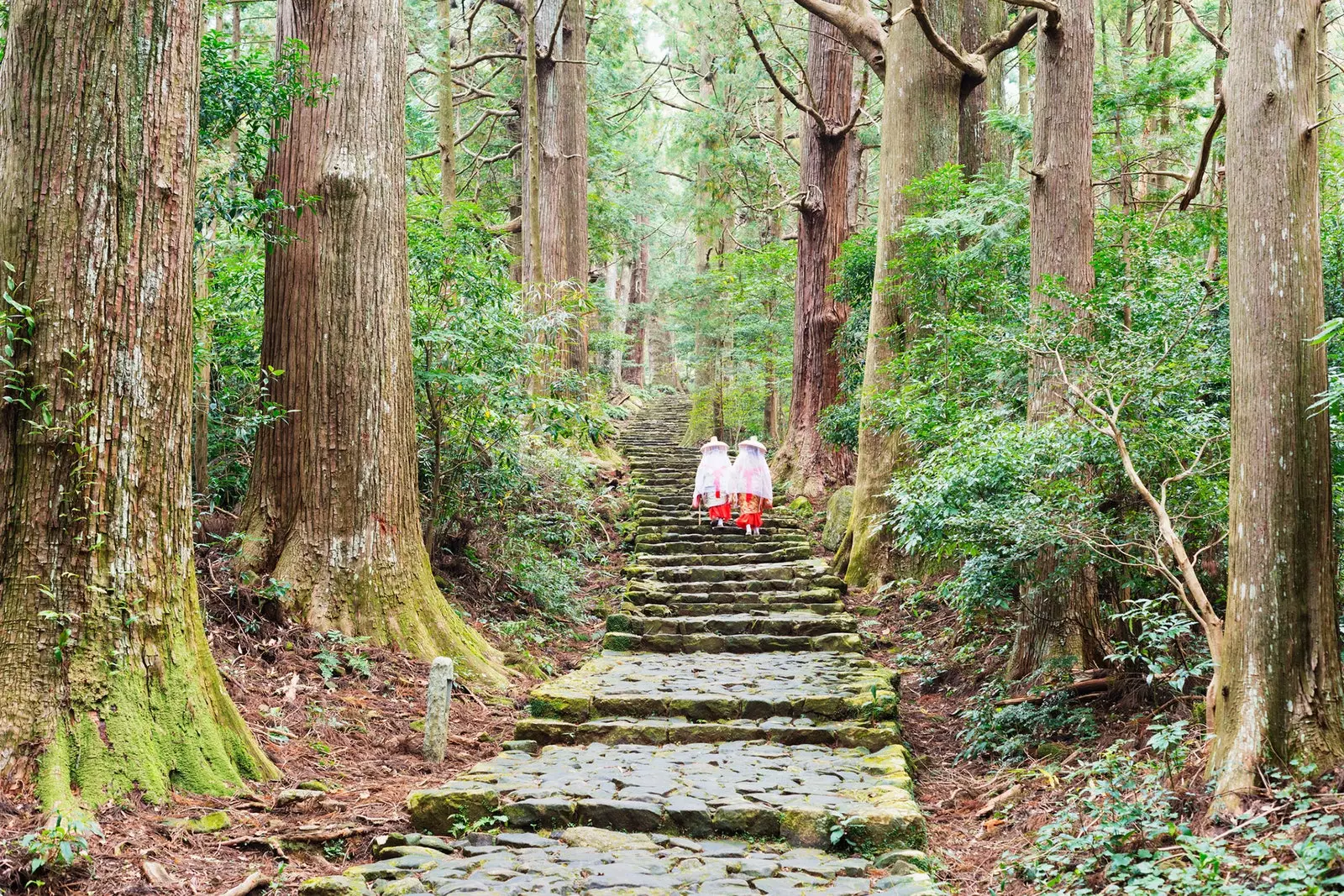
The Kumano Kodo or Japanese spirituality
Starting the pilgrimage in Kumano Sanzan , southeast of the kii mountain range , the three great sanctuaries that motivate Kumano Kodo are visited: Kumano Hongu Taisha, Kumano Hayatama Taisha and Kumano Nachi Taisha.
Getting lost in the woods cedars, ginkgos, camphor trees, bamboos ... especially in autumn, under the only sound of nature, it is an authentic communion of the senses . The adventure begins...
A WALK ON CLOUDS
On the way to Kumano Hongu Taisha we will go through Takijiri-oji , the entrance to the sacred mountain. From here, you reach the Kiri No Sato Lodge at the top of the town takahara , a perfect place to be amazed contemplating the Hatenashi mountain range covered by mist.
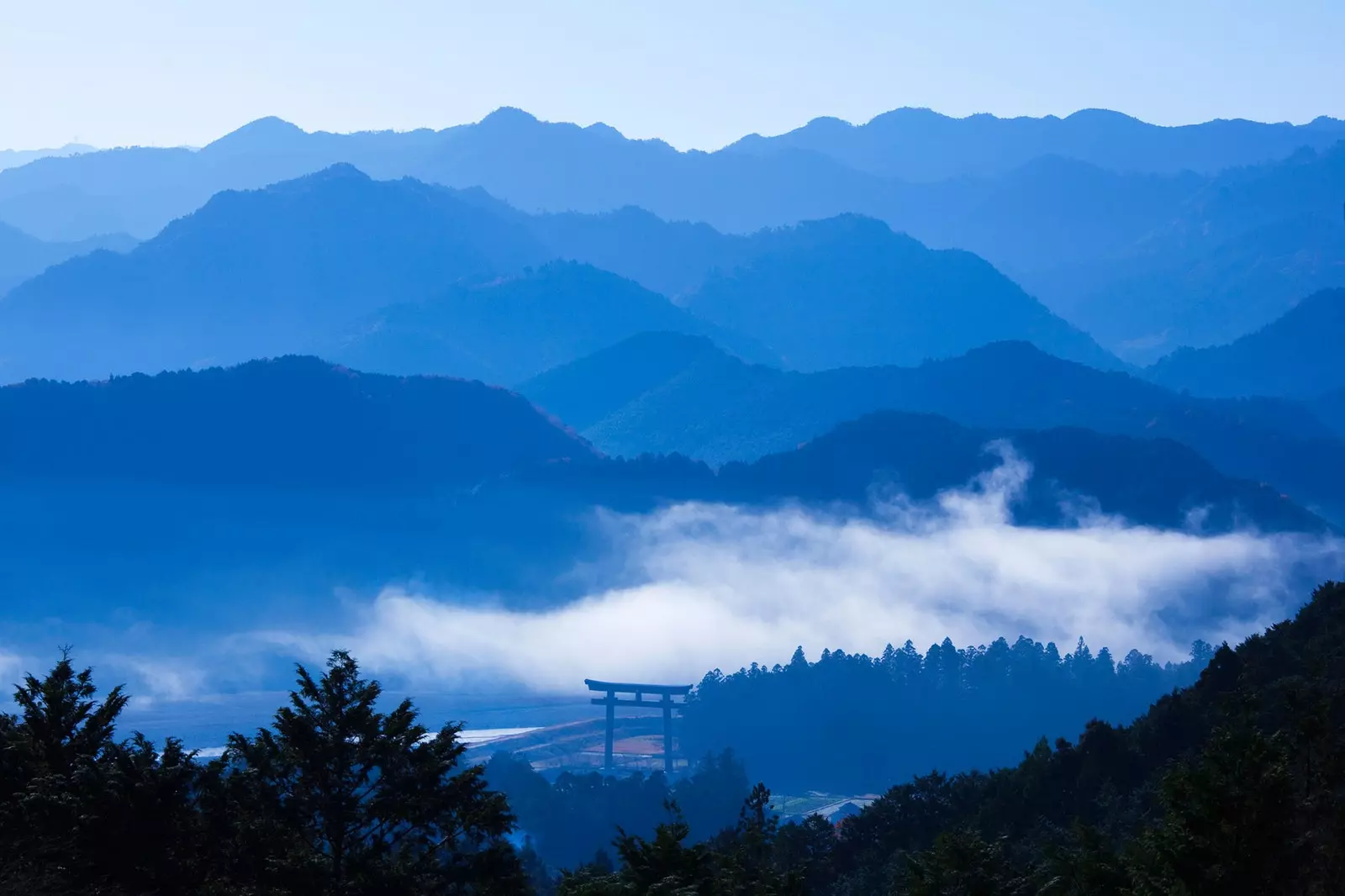
Hatenashi mountain range covered by mist
This view serves as a landscape appetizer to open the senses to the delicacy that goes in crescendo until reaching Oyunohara . It is the sandbank at the confluence of the rivers Kumano and Otonashi , original enclave of the Hongu Taisha until in 1889 a flood destroyed it.
The Torii (entrance arch to sacred places) largest in the world, 34 m wide and 42 m high , marks the entrance to the ancient Hongu Taisha.
Oyunohara is still a place where you can find peace, curiously in the delta of those same waters that one day destroyed it and that today, already calm, seem to protect it.
A stone staircase outlined by prayer flags leads to the new Hongu Taisha on top of the hill.
Both Oyunohara and Hongu host beautiful festivals, especially in spring, when the Yamabushi ascetics of the mountain celebrate the fire ritual.
These ceremonies come from long ago because already in the s. VI, when Buddhism came to Japan, Kii-no-Kuni (country of trees) became a center of ascetic training that was consolidated as such with the fusion of Shintoism and Buddhism, until it was considered a sacred place.
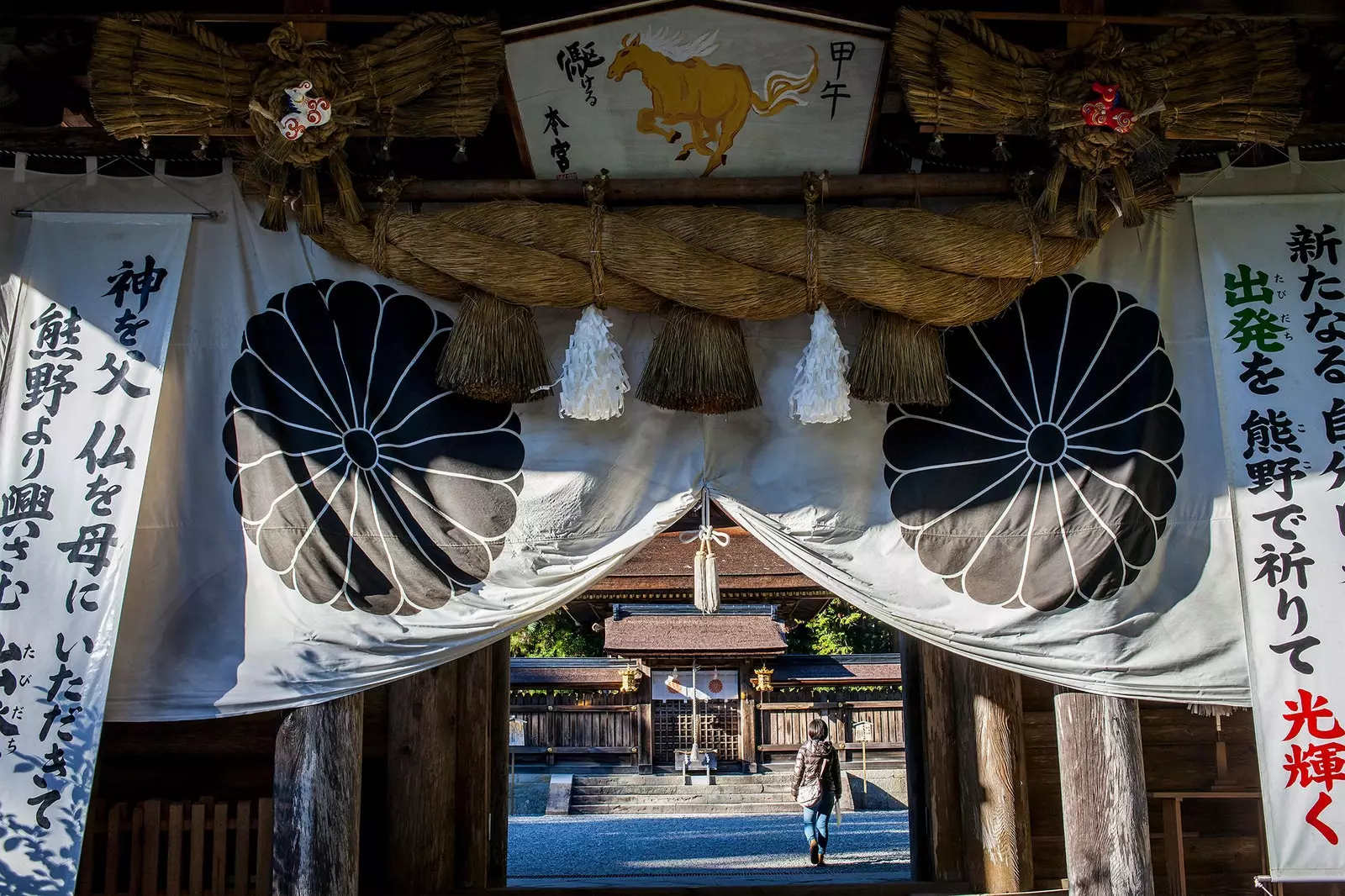
Kumano Hongu Taisha
The frequent expeditions of the emperors during the s. XI to XIII motivated the lifting of sanctuaries and lodges . he s. XX brought a new form of pilgrimage, by road, train... leaving the original routes to the undergrowth.
However, at the end of the 90s the pilgrimage to the primary places increased, which continued to rise when in 2004 UNESCO added it to its heritage either.
WHERE TO HEAL THE SOUL AND THE BODY
In hot spring villages like yunomine onsen Fumaroles appear along the main street and are lined with accommodation where you can enjoy those waters that are the protagonists of the villas.
Continuing with that medicinal route that underlies the area, we arrive at the pension of Ashita-no-Mori at Kawayu Onsen , located on the Oto River.
Approaching the cabin built with the owner's cedars and with his own hands, according to the Mr. Kurisu , it is observed how a couple of women hang out inside some excavated pools next to the river.
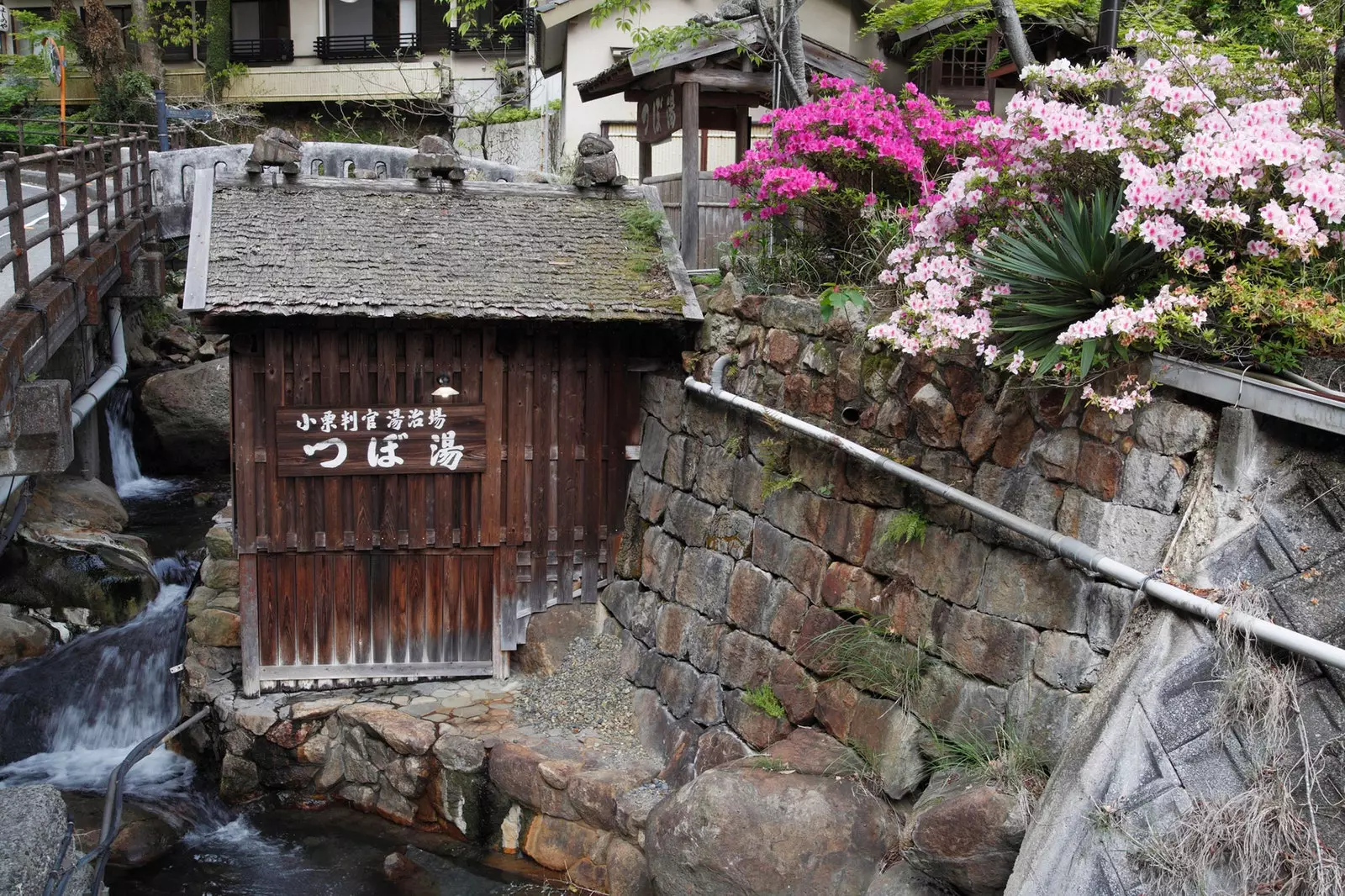
yunomine onsen
After showing the rooms, the owner hands out a shovel to the guests with which dig in the river gravel until warm water sprouts to submerge in it, benefiting from its properties.
Mr. Kurisu, displaying the union with the natural forces that Shintoism entails, comments how the pools that are now a haven for those who enjoy them, emerged from the river after the cataclysm of 2011.
CAME OUT OF A PICTURE
The morning will be accompanied by a beautiful tour, from Hosshinmon-oji to the second temple, Kumano Hayatama Taisha.
Seven hours of walking among the famous Wakayama orange trees and tea plantations bordered by trees dressed in autumn, the gingko in yellow, red maples and orange cedars.
Until entering the postcard of ancestral Japan by browsing the Kumano Gawa with the mist emerging from the waters and camouflaging the hills, while the boatman plays a Japanese ballad on his flute.
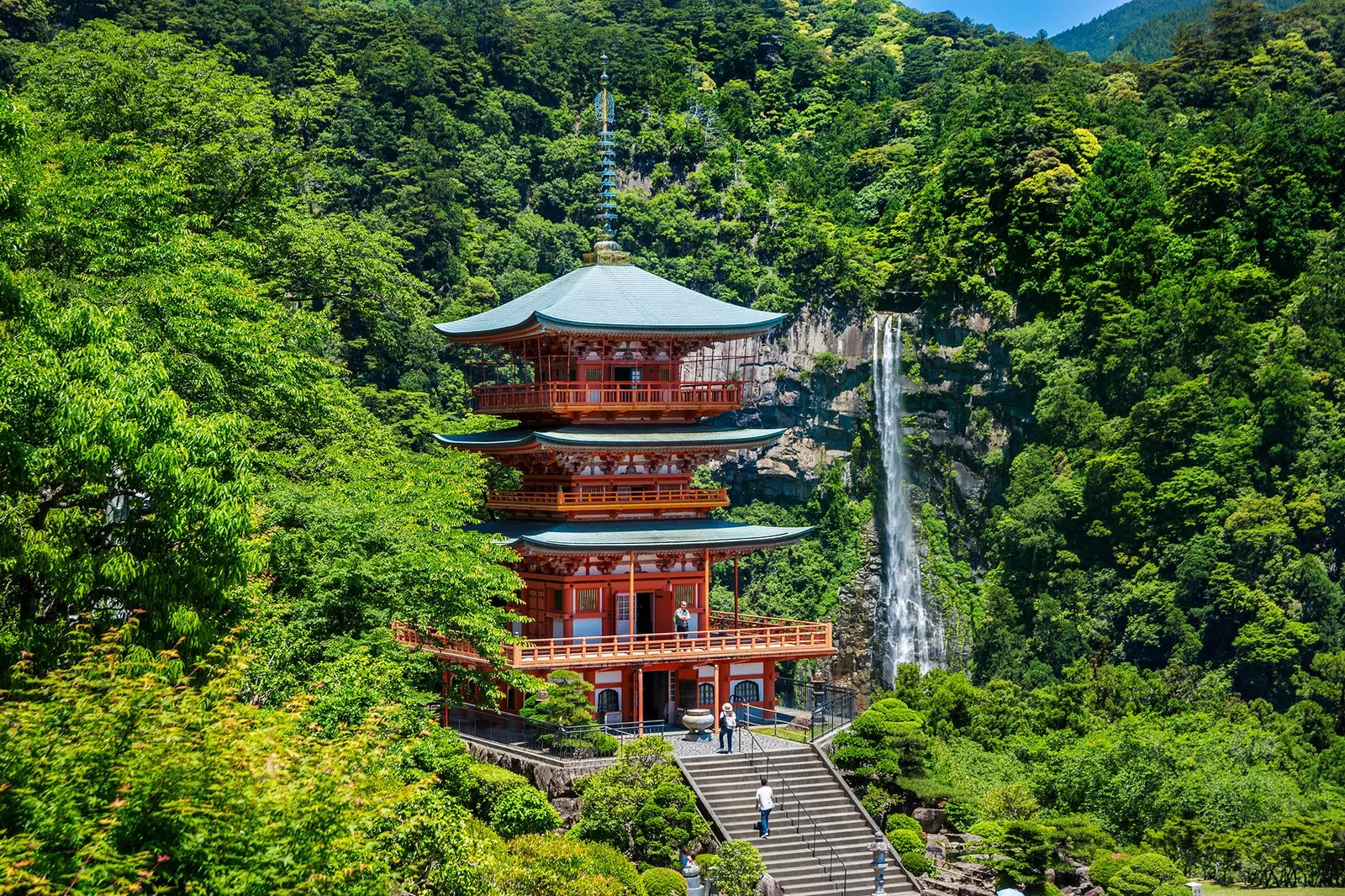
nachi-taisha
Although the original Taisha stood next to a huge rock chosen by three Shinto deities, currently Kumano Hatagaya Taisha It is located at the mouth of the river. The pilgrim purifies himself before entering the sanctuary by washing his left, right hand and mouth and enters the treasure room with the jewels donated by the imperial house in the s. XV and XVI.
THE CITY OF SASHIMI
Katsuura is the city of tuna and therefore of sashimi. Even its tourist barges emulate a gigantic tuna. A few kilometers from Katsuura is the great sanctuary of nachi-taisha , the third temple which, located at the top of the hill, is a clear example of Shinto-Buddhist fusion.
When climbing the stairs Daimon-zaka cross the red Torii that gives entrance to the sanctuary offering spectacular views of the Tii mountains and it is understood how this place has been chosen for the ascetic training of the monks who practice the Shugendo.
There it is possible to enter the depths of the sacred camphor tree of 850 years and chat with the monk who proudly shows the newspaper where the news of the twinning of the ** Camino de Santiago and Kumano Kodo ** is given, to finish in the pagoda of the Seiganto-Hi temple with views of the Nachi waterfall that with its 133 m of fall is the highest jump in Japan.
** CAMINO DE SANTIAGO AND KUMANO KODO TWINned**
Although they are separated by 10,755 km, they share a long tradition of pilgrimage, their love for nature and their inclusion in the UNESCO heritage. The double credential can be obtained, if both paths have been completed, at the Santiago de Compostela Tourism Office, Kumano Hongu Heritage Center or at the Tanabe Tourist Information Center.
WHERE TO SLEEP AND EAT
Kiri-No-Sato Takahara Lodge
A well-kept ryokan (traditional Japanese accommodation), with onsen (hot springs) and excellent organic cuisine. Its owner Jian speaks several languages.
Ashita-no-Mori Guesthouse
Organic tea served ceremonially by the Mr. Kuriso , and traditional Japanese food with products from their own Hoshimon plantation.
Ryokan Nakanoshima
Overlooking the ocean and the fishing port, it is a huge Ryokan-Resort that has with all kinds of thermal baths and swimming pools. The main dish of its gastronomy is a varied selection of fresh and well presented sashimi kaiseki style , faithful to the Japanese aesthetic.
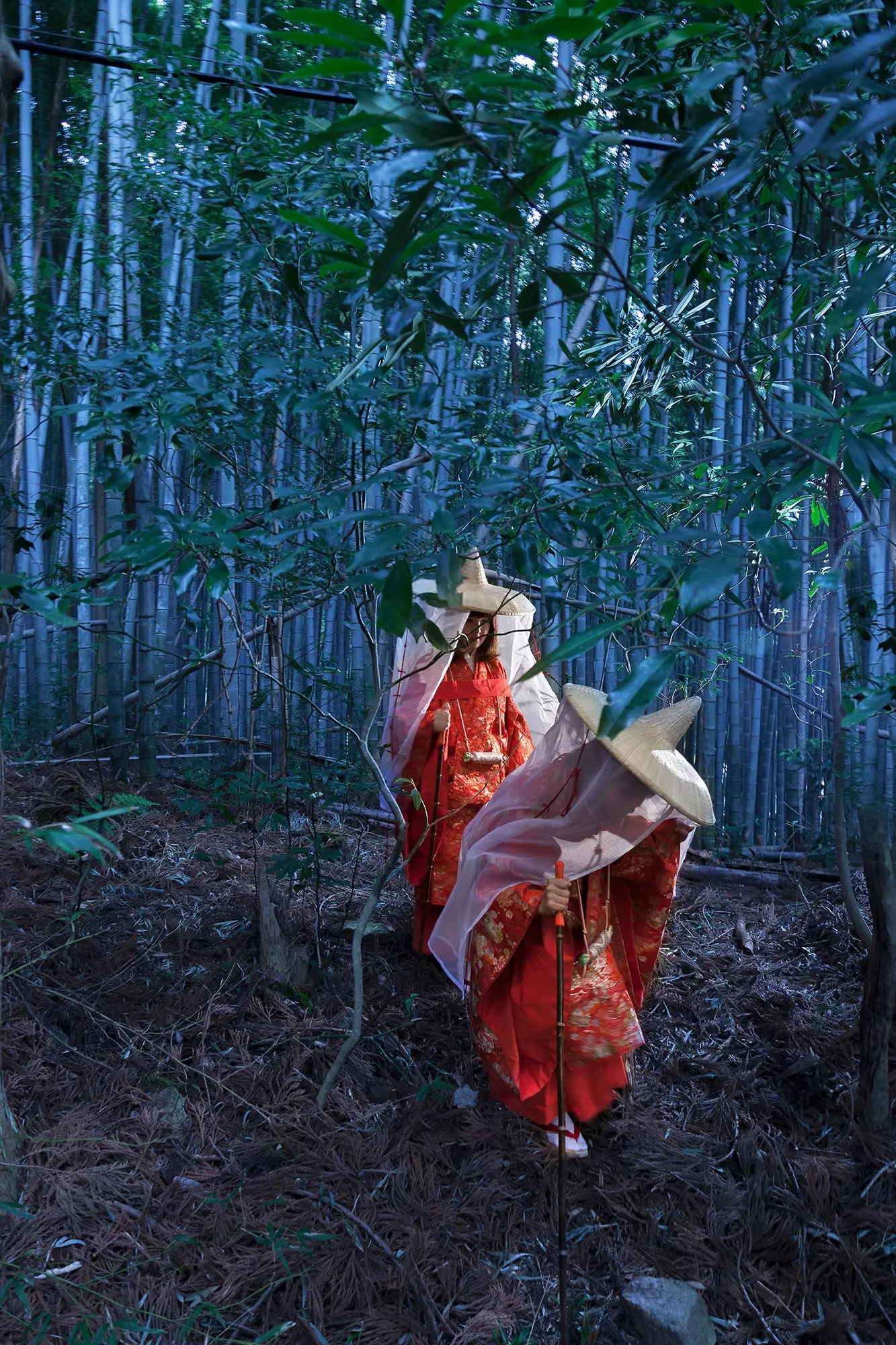
Two pilgrims in the Daimon-zaka area
